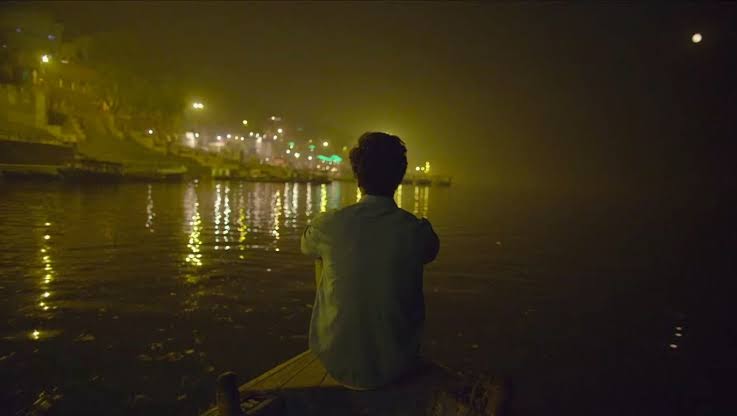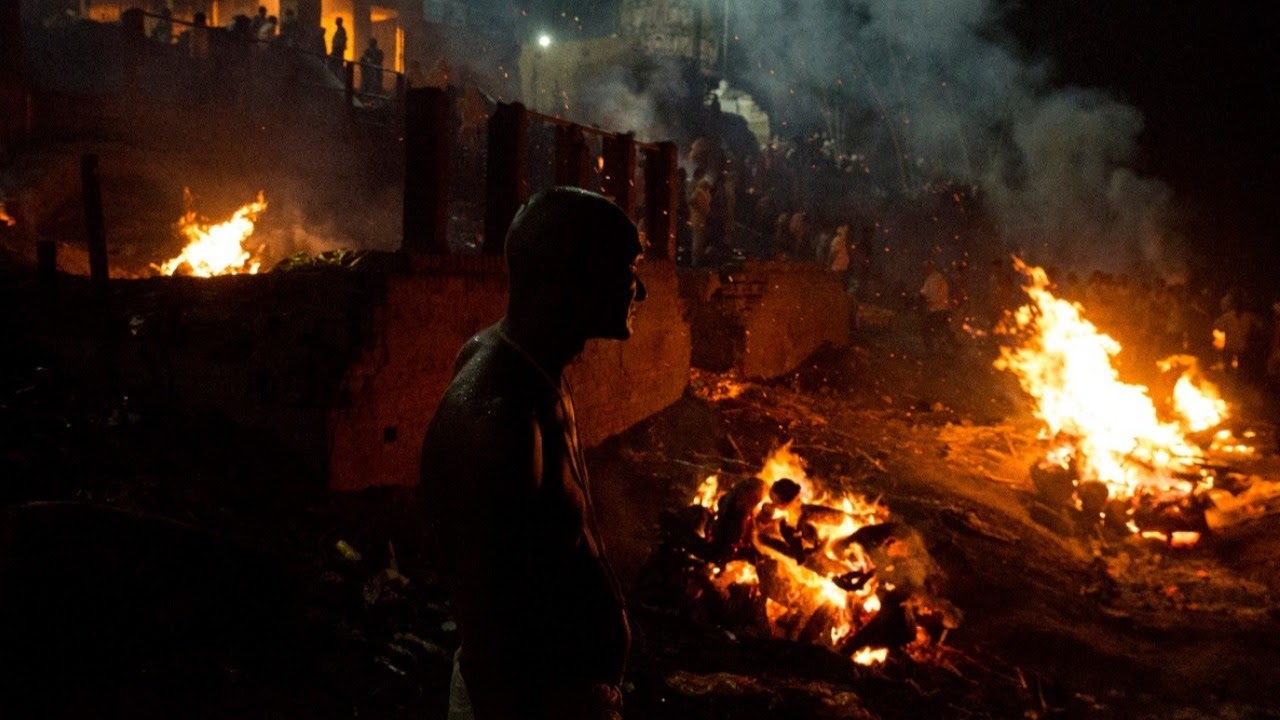

Body of IITR

SPOILER WARNING
This editorial aims to critique and appreciate the brilliant symbolism found in the movie ‘Masaan’. The article looks closely at defining moments of the movie, and readers are advised to watch the movie first, in order to thoroughly soak in this emotionally evocative ride.
If one were to stand at a point on the bank of a river, and stare at a spot on the flowing water, involuntarily, one would follow the crests and troughs as they moved forward. We take notice of this disobedience, this rhythmic ebb and flow, and drag our eyes back. Again they wander, dragged along by the gurgling fluid. We blink twice, steady our minds and stare hard till our vision blurs and our heads ache - and yet our eyes rebel. At this point we start to realize that each iteration shows us the same sight. Each set of images, each consecutive wave pulse is identical to the previous. For all intents and purposes the river never changes, remains static and indistinguishable to our eyes. And yet the journey these drops of water make! Infinite identical water molecules trace this path all the way from the glacier high up in the mountains to the wide mouth by the sea. Each particle rushing, trickling, splashing, falling, experiencing! While our lives may be but a blip on the cosmic time diagram, they are a celebration of the wealth of experience this universe has to offer. Just as every water molecule, irrespective of its origin, irrespective of the path it takes, sooner or later merges with the giant, interconnected waters of the oceans, so must all life, as surely as it has erupted, ultimately end in identical fashion.
For a movie about the shackles of birth, grief and the interconnectedness of the universe, Neeraj Ghaywan and Varun Grover could have chosen no better metaphor than the Ganga. In many ways, the river is responsible for the events that occur. It enables the creation of the film’s world, acts as a narrator, and at times directly enters the plot as an inanimate cast member. The Ganga is important to each and every character in Banaras, mirroring and influencing their lives.
The city of Banaras was built around the Ganga, and even today the hustle bustle of this temple town revolves around the river. The Ganga, then, in one way or another, is linked with the multitude of professions and castes that flourish today in Banaras . Vidhyadhar Pathak, who gives up his teaching position at the University to care for his daughter after her mother passes away, is presented with an alternate source of income as a pandit. The holy Ganga attracts tourists and pilgrims, who in turn create the demand for rituals, offerings and merchandise. The river also offers young Jhonta a means of earning fast money through gambling and risking his life. The boatmen and fishermen of Banaras depend on it for their daily income.
The Doms, the traditional corpse burners of Varanasi, are an ‘untouchable’ caste that exist solely because death in Varanasi and being cremated at the Ghats, is considered to be a direct ticket to moksha. These are the shackles that Deepak is born into - the threat to all his dreams and hopes. For him, the City of Lights is not the city of lamps and aartis - it is the painful city of funeral pyres, burning bodies and choolas heated by wood from the ghats. The Ganga marks a physical divide with the ‘Kashi Naresh’ on one bank and the ‘Dom Raja’ on the other. For Deepak, education is the only way out of the life his forebears could never leave. It is the ticket to be rid of the tag of ‘Corpse Burner’ that he has been branded with at birth, the ticket to a more comfortable life, the ticket to love.

The river is a hang out spot for the locals, be it for daily chores like bathing or cleaning, for religious and spiritual duties or just for fun. Pandit Pathak chats with his friends outside his shop, Deepak and his friends chill on the banks or hitch a boat ride in the dark. The river bank is the site of Deepak and Shaalu’s romance and their first kiss. It is also where the Doms drink, smoke and make merry as they age. The river is their eternal companion, silently observing and offering its solidarity.
It is heart wrenchingly cruel that love - the only thing Deepak at the time identifies as being worth living for, worth toiling for, worth fighting for - is snatched away by the very same Ganga river. The same river that ensured that Deepak would go to the Polytechnic college, meet Shaalu and eventually fall in love with her at its banks, drowns her miles away on a pilgrimage to other sites built along the same Ganga. The same river then brings her body all the way over to Varanasi, to Deepak, so he may at least cremate her and see her one last time. The same river brings to him her ring, something to remember her by and to hold on to her memory.
Perhaps the biggest theme of Masaan is that life keeps moving forward. Just as the river does not stop flowing and keeps hurtling towards the ocean, so must a human. A person who stops moving, stops trying to live is effectively dead. Sure, setbacks may occur and one may need time to recuperate. But as the water collects and rises until it can clear the barrier, so do the characters in Masaan. Devi refuses to let her freedom be curtailed. Deepak gets right back to his studies for he knows that he cannot afford the luxury of sitting around and moping.
The river is a metaphor for letting go and flowing through life. This is the central emotional conflict of the film as the main characters (that are still alive) learn to feel yet to not cling to that emotion.
It is interesting that when Deepak throws away the ring but dives in out of regret, he is unable to find the ring and is at last able to let go, sleeping calmly on the shore. Yet when Devi tries to immerse the gift she received from Piyush, it is pushed back to her as though asking for confirmation that she is indeed prepared to let go without ever knowing what is inside the box. The Ganga seems to know what the characters need when they come to it for aid and helps them out as it deems fit. At the end of the original screenplay, Deepak describes this as “Thode din pahle hum bhi aise hi they… Ganga ji mein kood gaye…! Sab dhul gaya.” (A few days ago, I was the same…I jumped in the Ganga and everything was washed off.) This is also demonstrated when Jhonta, desperate for a family, finds the ring while almost drowning in the process and gives it to debt ridden Pathak who profusely expresses his love for Jhonta as his own blood.
In a similar vein, the river also describes the theme of breaking away from the shackles and being free. The only way for our characters to leave the lives they hate is by working to leave home. If one finds oneself in deep, dark, troubling waters, the only way out is to breathe and follow the bubbles.. If one gives in to the situation and offers no resistance, one will either drown or be carried away by the mighty swells till one is shredded by debris or has one’s brains dashed out against a rock. Either way one suffers and dies. This is what has happened to Sikander who has lost his chance to study and leave Harishchandra Ghat. He is a warning to Deepak who cannot afford to slip up, who, like Devi, is held to a different standard by society.
It is said that one must visit the Sangam twice. Once alone and once with someone else. When Deepak visits for the first time with Shaalu, this is simply a metaphor for love. As the two mighty rivers that have travelled a long distance, and must travel further ahead, meet at a single place, so do these two people with different histories and personalities meet. I may be reading into it too deeply, but it is striking that only one stream leaves the Sangam, foreshadowing the events to come. When Deepak visits the second time, alone, his romance comes full circle.
At a spiritual level, this film is about the similarities and interconnectedness of life. While the characters may face different problems, their situations are similar. The source of their problems is similar, the feelings of love, hatred, helplessness, grief, hope and serenity they feel as they live alongside the Ganga are identical. This is alluded to in the song ‘Mann Kasturi Re’ which compares our minds to a musk deer that searches for the source of the sweet scent, not realizing that the smell comes from itself. The differences that humanity has created in society are artificial and are a matter of perception. ‘Ulta karke dekh sake to, Ambar bhi hai geheri khai’. (Even the sky is an abyss if inverted)
Water from the two rivers combines at the Sangam till it is no longer distinguishable where it came from. What river could convey this theme better than the Ganga? Corpses from all ages, all castes, all genders burn side by side in the crackling fires of the Ghats before being dispersed in the water. In this blip we identify as ours, we live, we die.
ज़िन्दगी क्या है, अनासिर में ज़हूर-ए-तरतीब, मौत क्या है, इनीं अज़ा का परेशाँ होना।”
- बृज नारायण ‘चकबस्त’
“What is life? A delicate arrangement of the five elements. What is death? A slight disturbance of this arrangement.”